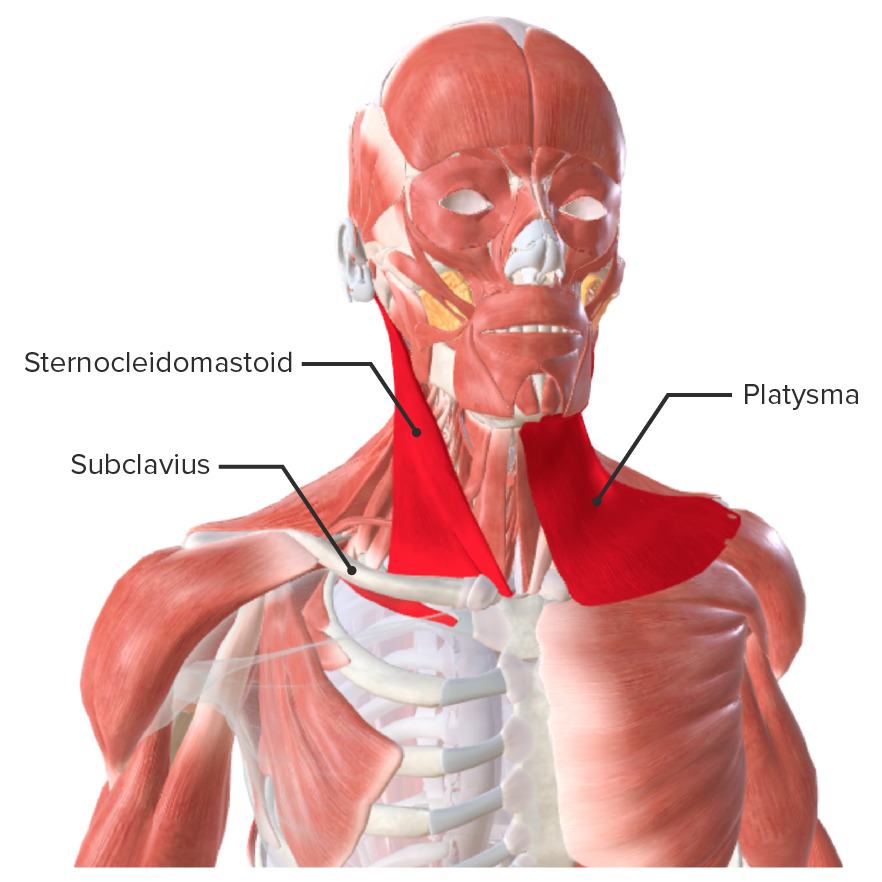Playlist
Show Playlist
Hide Playlist
Cervical Fasciae and Compartments
-
Slides Anatomy Cervical Fasciae Compartments.pdf
-
Reference List Anatomy.pdf
-
Download Lecture Overview
00:01 Now let's take a look at the connective tissue coverings of the cervical area or the fascia and the compartments that they enclose. 00:10 Here's a cross section view of the cervical area where we can see a couple of the superficial muscles of the neck, such as the sternocleidomastoid in the trapezius. 00:23 These muscles are encased in something called the investing fascia. 00:29 If we look a little bit more anteriorly, we see the trachea. 00:34 Posterior to that the esophagus. 00:37 We also see the thyroid gland sitting around the trachea and the recurrent laryngeal nerve. 00:44 And all of these structures are encased in something called the pre tracheal fascia. 00:50 This area we would call the visceral compartment, because it's connecting to areas of organs. 00:58 Little more posteriorly, we see all of these muscles called paravertebral muscles surrounding to an attaching to the vertebrae. 01:08 We also have the sympathetic chain in this area. 01:12 And all of these structures are encased in something called the prevertebral fascia. 01:18 Posteriorly this prevertebral fascia is going to become continuous with the nuchal ligament. 01:25 And altogether we consider this the vertebral compartment. 01:30 Now we see some vascular structures such as the internal jugular vein more laterally, and the common carotid artery a bit more medially as well as the vagus nerve or cranial nerve 10. 01:44 And these are all enclosed in something called the carotid sheath and we call this the vascular compartment.
About the Lecture
The lecture Cervical Fasciae and Compartments by Darren Salmi, MD, MS is from the course Neck Anatomy.
Included Quiz Questions
Which structure is NOT included within the visceral compartment?
- Sternocleidomastoid
- Trachea
- Thyroid gland
- Recurrent laryngeal nerve
- Esophagus
Which structures are contained within the carotid sheath? Select all that apply.
- Common carotid artery
- Internal jugular vein
- Vagus nerve
- External jugular vein
- Subclavian vein
Customer reviews
5,0 of 5 stars
| 5 Stars |
|
1 |
| 4 Stars |
|
0 |
| 3 Stars |
|
0 |
| 2 Stars |
|
0 |
| 1 Star |
|
0 |
Simple, concise and perfect explanation of a very complicated topic.




